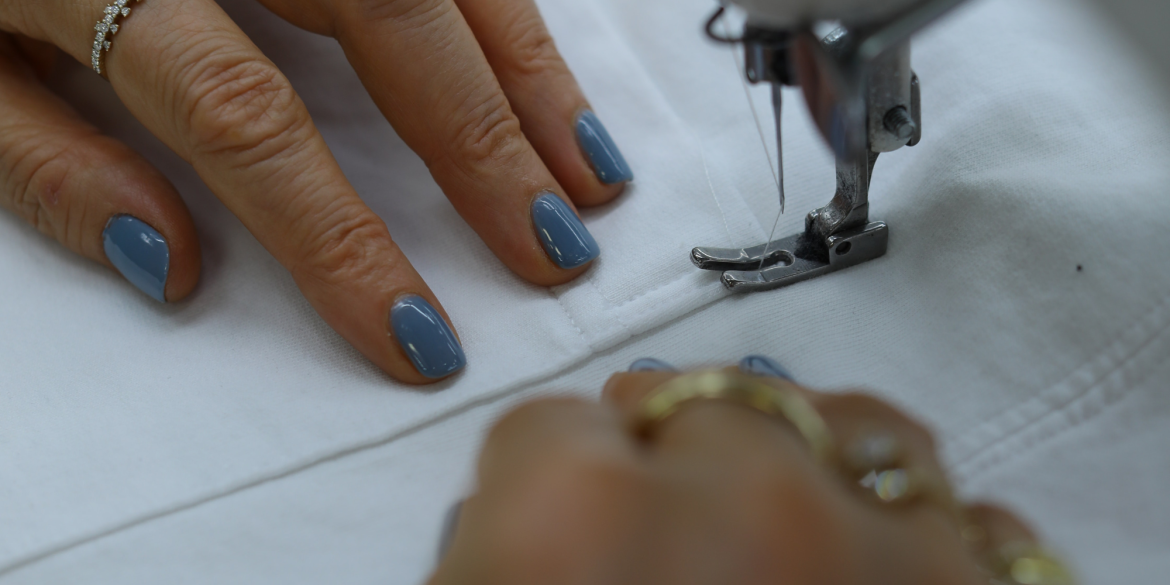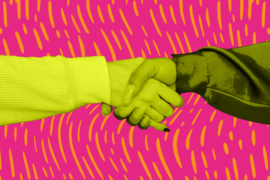Have you ever wondered how much work goes into the clothes that you wear? Let’s do a little thought experiment.
Imagine a blazer. Imagine all the pieces of that blazer separated from each other. Now, imagine yourself sewing the piece together. You’re hunched over a machine stitching one piece of fabric to another. You’re creating a sleeve and then stitching that sleeve to the chest and the collar, and that collar to the neckline. That’s a lot of work, right? Just wait, because we aren’t done.
If we think a little deeper than that, we can imagine cutting the fabric out and measuring the length and width of your arm to create the pattern, or even just the time it takes to develop the fabric. This is not the same as shopping for the fabric, no, we’re weaving the fabric. Don’t freak out, we are just imagining all of this. We’re dying all the threads repeatedly to get that perfect pastel blue you had imagined. Then, we are weaving each string together to create one large piece of cloth to be then cut down to fit a pattern for a blazer.
When we break the process down and try to understand the steps to garment creation piece-by-piece, it’s very plain to see that this isn’t easy work. Making a garment is not something that can be done in an hour or even a day. Some garments take years to create, revise, and remaster until you’ve got even the most average-looking piece.
Don’t get too comfortable yet, the thought experiment is not over. You just finished your blazer. It took you forever to complete. You’re proud of yourself. You put in a lot of hard work, time, and money. You sell this blazer and the next thing you know… it’s in the trash! Aren’t you mad? Because you should be! Not only did you spend so much time on this piece, but it was a good piece. You wove the fabric all by yourself, you made sure it was ethically sourced, and the dye that you used was natural. It took you months to weave the fabric, it took you days to create the pattern, and it took you years to learn everything needed to complete this project. Now your blazer is sitting in a landfill somewhere. That’s another reason to be mad. Not only did this piece mean something to you, but now it is sitting in a dump somewhere, ruining the environment.
It may be hard to believe, but this happens all of the time. Clothes that took years to come to fruition are now stacking up in landfills and our waters. Textile waste accounts for over 92 million tons of waste in our landfills and one-fifth of waste pollution every year. This waste builds up constantly, and textile waste takes over 200+ years to decompose, all the while, the chemicals from the fabrics generate greenhouse methane gasses and leak toxic waste into our soil and our water systems. This waste adds to pollution and affects the air we breathe by diffusing ammonia into the air. It also affects the water we drink, our plant life and rainforests, and the quality of life for people who live in countries where textile production is rampant.
Hearing all of this may be overwhelming, and you may not know where to start in terms of helping to reach a solution, but that’s why we can take it one step at a time. Here are three things that I do, as a regular fashion consumer, to help in limiting my ecological footprint.
The first thing I started doing was recycling my clothes, and I don’t mean in the bins. I used to live in a dorm that had a bench called the “Thrift Store,” It was a bench where you could put clothes on that you didn’t want anymore, and you could take clothes too if you thought something fit your style. As soon as I was tired of that piece of clothing, I would wash it, and place it back on that bench. It was sharing on a larger scale. Some people may be iffy about sharing clothes with strangers, but that’s why you can wash them before you try them on. That experience made me feel less wasteful, and it was free! Even if you don’t have one of these “Thrift Stores” in your area, you can start your own! You don’t need anything to start other than old clothes and something to set them on, easy!
The second thing I started doing was upcycling. I have known about upcycling since I was a little girl, and the things I have seen people create are incredible! Upcycling is reusing discarded fabrics and materials to create a new product. You can buy clothes from goodwill and cut them into basic things, but I have seen people take old bed sheets and curtains to make ball gowns, and it is so much cheaper than buying the fabric in the store! If you do not know how to upcycle, it can always be helpful to learn to sew! PATTERN offers sewing classes with our sister company Stitchworks to teach people of (almost) all ages to sew and create to their heart’s content!
The third way you can help is to limit your over-consumption. Understanding that you don’t always need the newest, trendiest thing is important. Also, trying shopping from retailers that are forthcoming about their factory process and are ethically sourced is another great way to help. Here are some brands that are sustainable, meaning that they have safe working environments, fair wages, and they source their materials ethically: Levi’s Girlfriend Collective, Outerknown, Nisolo, etc
Allowing people knowledge on how difficult and tedious it is to create beautiful clothing can hopefully change our minds and how we view fast fashion and move us in the direction of a more fashionably eco-conscious generation. We all want clothing to look good and last long, but we should also want our clothes to positively impact our world, our water, and the people who make them.




